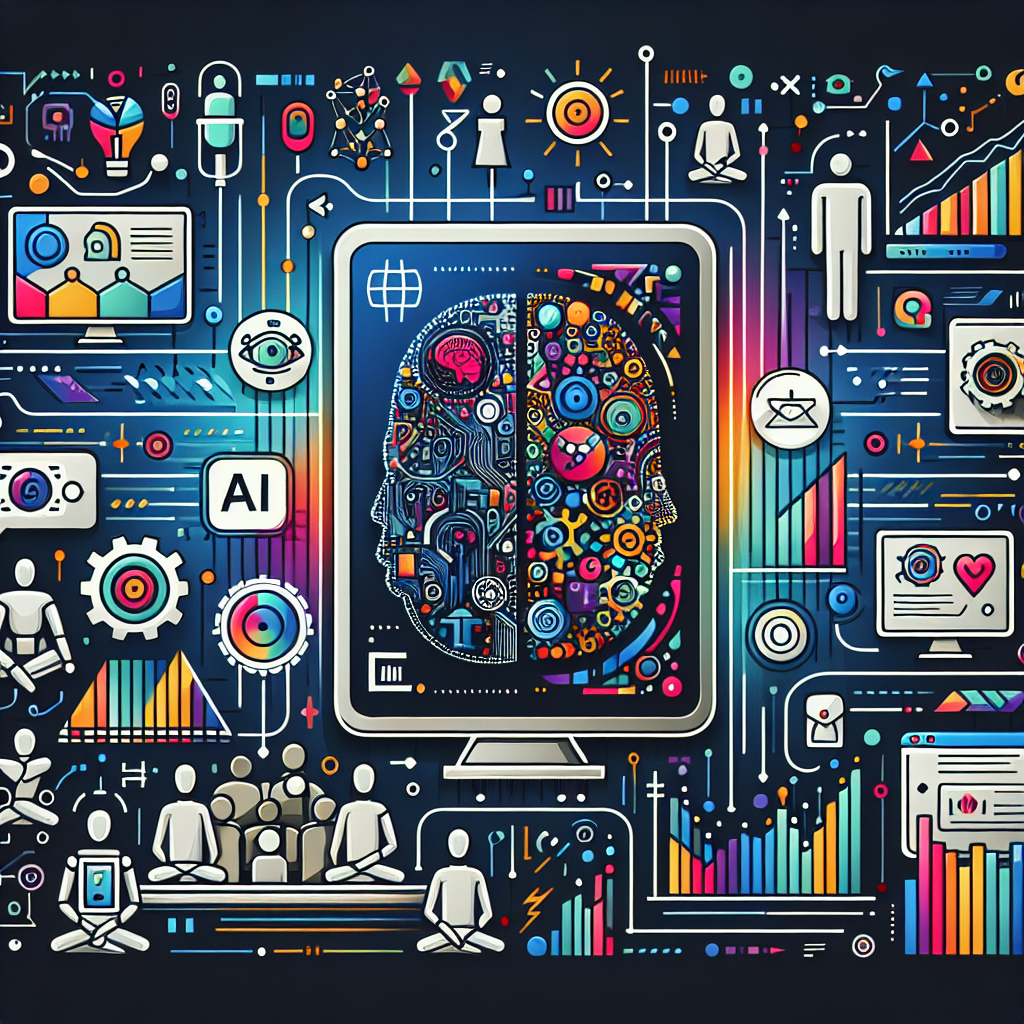AI and Interactive Art: Engaging Audiences with Technology
Art has always been a reflection of society, culture, and technological advancements. As we move further into the digital age, artists are exploring new mediums and technologies to create interactive experiences that engage audiences in unique and innovative ways. One such technology that is revolutionizing the art world is artificial intelligence (AI).
AI has the ability to analyze data, learn from patterns, and make decisions based on past experiences. This technology is being used in a variety of fields, from healthcare to finance, and now it is making its mark in the world of art. AI can be used to create interactive art installations that respond to the viewer’s movements, emotions, or even thoughts, blurring the lines between the creator and the audience.
Interactive art has been around for decades, with artists using sensors, cameras, and other technologies to create immersive experiences for viewers. However, AI takes this concept to a whole new level by allowing the artwork to adapt and evolve based on the viewer’s interactions. This level of customization and personalization creates a deeper connection between the audience and the art, making the experience more engaging and meaningful.
One of the key benefits of using AI in interactive art is its ability to create dynamic and ever-changing experiences. Traditional art forms are static and unchanging, but AI can create artworks that evolve over time, responding to the viewer’s actions and inputs. This creates a sense of unpredictability and excitement, keeping audiences engaged and interested in the artwork for longer periods of time.
Another benefit of using AI in interactive art is its ability to analyze and interpret data in real-time. This allows artists to create artworks that respond to the viewer’s emotions, movements, or even brainwaves. For example, an AI-powered installation could change colors or shapes based on the viewer’s heart rate or brain activity, creating a truly immersive and personalized experience.
One artist who is pushing the boundaries of AI and interactive art is Refik Anadol. Anadol is known for his large-scale installations that combine AI, data, and light to create mesmerizing and immersive experiences. His work blurs the lines between reality and technology, inviting viewers to explore new ways of interacting with art.
In one of his most recent installations, Anadol used AI to create a dynamic and ever-evolving artwork that responded to the movements of the audience. The installation used sensors to track the viewers as they moved through the space, with the AI algorithm generating new patterns and shapes based on their interactions. This created a truly interactive and personalized experience for each viewer, as the artwork changed and adapted in real-time.
Anadol’s work has received widespread acclaim for its innovative use of AI in art, with critics praising his ability to create immersive and engaging experiences that push the boundaries of traditional art forms. His installations have been featured in galleries and museums around the world, showcasing the potential of AI to revolutionize the art world.
But Anadol is not the only artist exploring the possibilities of AI in interactive art. Artists like Memo Akten, Zach Lieberman, and Sougwen Chung are also using AI to create interactive installations that challenge our perceptions of art and technology. These artists are pushing the boundaries of what is possible with AI, creating artworks that are not only visually stunning but also emotionally engaging and thought-provoking.
As AI continues to advance and evolve, we can expect to see more artists experimenting with this technology in their work. The possibilities are endless, from AI-powered sculptures that change shape based on the viewer’s movements to virtual reality experiences that respond to the viewer’s emotions. AI has the potential to revolutionize the art world, creating new and exciting ways for audiences to engage with and experience art.
FAQs:
Q: How does AI work in interactive art?
A: AI works by analyzing data, learning from patterns, and making decisions based on past experiences. In interactive art, AI can be used to create installations that respond to the viewer’s movements, emotions, or even brainwaves, creating a truly immersive and personalized experience.
Q: What are the benefits of using AI in interactive art?
A: The benefits of using AI in interactive art include creating dynamic and ever-changing experiences, analyzing and interpreting data in real-time, and engaging audiences in new and innovative ways. AI allows artists to push the boundaries of traditional art forms and create truly immersive and engaging experiences for viewers.
Q: Can anyone create interactive art using AI?
A: While creating interactive art using AI does require some technical knowledge and expertise, there are a growing number of tools and resources available to help artists explore this technology. Artists can collaborate with AI experts or attend workshops and courses to learn how to integrate AI into their work.
Q: What is the future of AI in interactive art?
A: The future of AI in interactive art is bright, with artists continuing to push the boundaries of what is possible with this technology. We can expect to see more immersive and engaging artworks that respond to the viewer’s emotions, movements, and even thoughts, blurring the lines between creator and audience. AI has the potential to revolutionize the art world, creating new and exciting ways for audiences to engage with and experience art.

